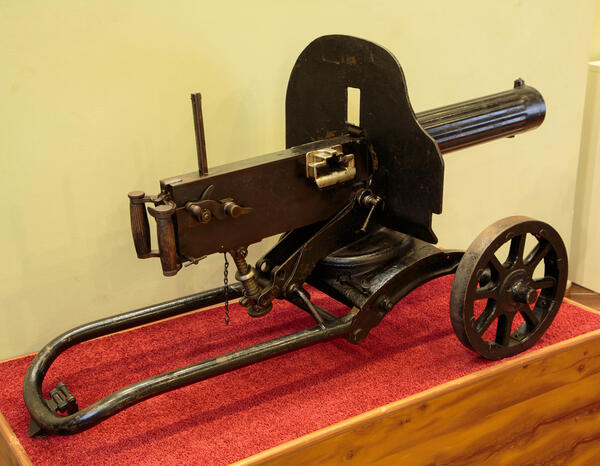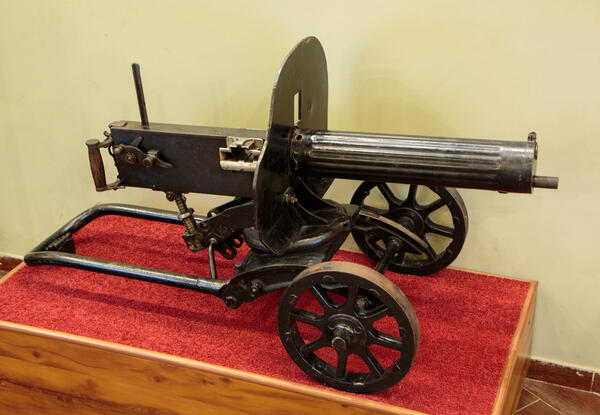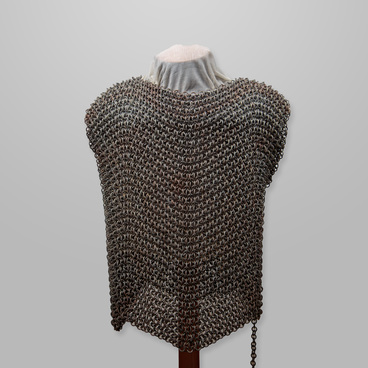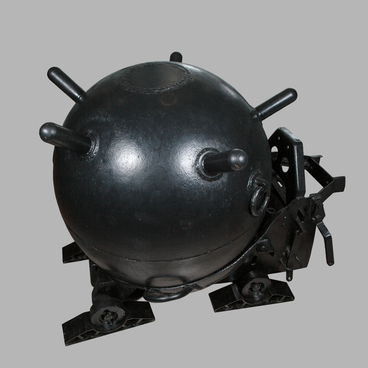In 1901, the English version of the 7.62-mm Maxim machine gun mounted on a wheeled carriage was adopted by the Russian Imperial infantry. Within a year the first 40 units were received by the Russian army. In March 1904, it became possible to sign a contract for the production of Maxim machine guns at the Tula Arms Factory.
It cost 942 rubles to manufacture one Tula machine gun. In addition, 80 pounds was paid as commission to the Vickers company. Therefore, the total cost was approximately 1,700 rubles per gun. Still, it was much cheaper than buying weapons from the British — they asked for 2,200 rubles for one machine gun. Serial production in Tula began in the spring of 1904.
Later, it was decided to modernize the machine gun, and at the beginning of 1909, the Main Artillery Directorate announced a competition. The developments were led by Ivan Alexeyevich Pastukhov, Pavel Petrovich Tretyakov and Ivan Alexandrovich Sudakov. In August 1910, a modified version of the machine gun was adopted.
The Maxim machine gun of the 1910 model received a number of changes. The weight of its body was reduced, some bronze parts were replaced with steel ones, the aiming devices were changed to match the ballistics of the cartridge with a pointed bullet of the 1908 model, and the receiver was also redesigned to fit the new cartridge.
The Maxim machine gun of the 1910 model with the carriage weighed about 60 kilograms. It was widely used by the Russian Imperial and Red Armies during World War I and World War II as a means of striking open group targets, as well as enemy firepower at a distance of up to one kilometer.
In 1930, this weapon was upgraded again. It
received the designation “7.62 Maxim machine gun of the 1910/30 model”. During
the Great Patriotic War, it was in service with rifle and mountain rifle units,
border guards and navy, and was also installed on armored trains and vehicles.
One of the largest suppliers of these machine guns during the war was the city
of Izhevsk.




